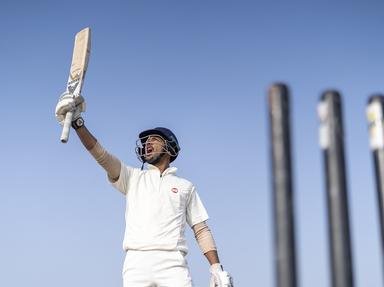Quiz Answer Key and Fun Facts
1. Which of the following opening combinations is the only one that is made up of two Englishmen?
2. Which of the following nicknames is best associated with West Indies batsman Vivian Richards?
3. Don Bradman (famously) missed out on a Test cricket batting average of 100, but did he finish his first class career with an average in excess of 100?
4. Which one of the following was not one of the famous "Three W's" from the West Indies teams of the 1950s?
5. Which of the following was the first cricketer to have played 100 Test matches?
6. Which cricketer did Sir Donald Bradman once describe as "the five in one cricketer"?
7. Which New Zealand bowler was the first to take 400 wickets in Test matches?
8. Which of the following bowlers almost killed Australian batsman Peter Toohey, during a Test match at the Queen's Park Oval in Trinidad & Tobago in 1977?
9. In 1993 Curtly Ambrose took seven wickets during a spell in a Test match in Perth for the cost of one run.
10. Known as "Beefy", which English all-rounder became the first man to score a century and take ten wickets in the same Test match?
Source: Author
pollucci19
This quiz was reviewed by FunTrivia editor
gtho4 before going online.
Any errors found in FunTrivia content are routinely corrected through our feedback system.
